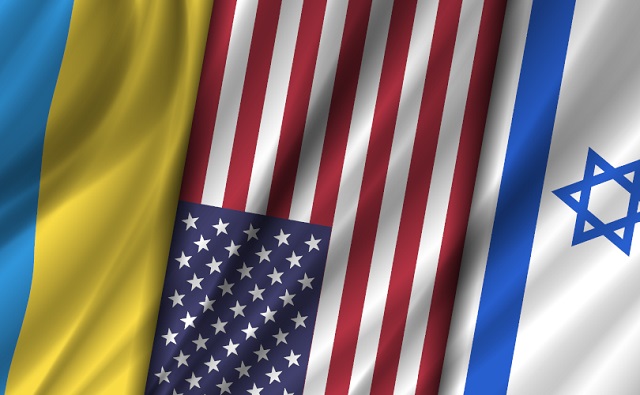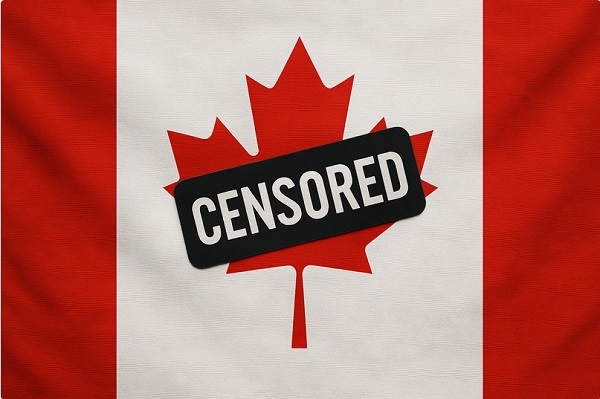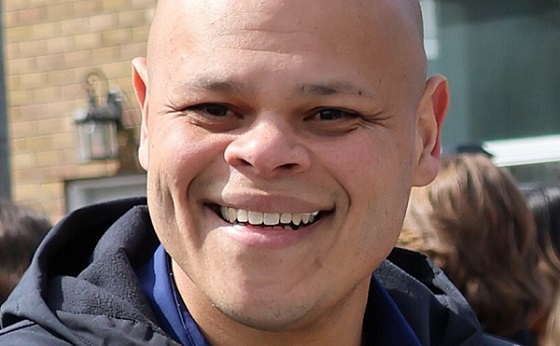International
How the US government is thwarting peace efforts in Ukraine and Israel

From LifeSiteNews
By Frank Wright
Investigative journalist Seymour Hersh warns of political repercussions for the Biden administration’s handling of the international crises in Europe and the Middle East.
To get to the news these days, you have to look beyond the facade of mainstream media. No major outlet in the West has reported the findings of Seymour Hersh, made in a post on Substack on March 21, which claim that the United States government is determined to prevent peace in Ukraine.
Citing an anonymous “American official,” Hersh wrote “officials of the Biden administration, working with [Ukrainian President Volodymyr] Zelensky, continue to rebuff any chances of significant progress in peace talks.” Referring to his earlier report, which documented ongoing talks between the U.S. and Russia, Hersh says his source is “kept abreast” of this dialogue concerning a negotiated settlement to the war in Ukraine. According to the unnamed mole, peace was within reach, and the U.S. moved to prevent it with a threat to turn off the money supply to Ukraine.
We were on the verge of a reasonable negotiation several months ago before Putin’s re-election and Zelensky’s military degradation.
The U.S. leaders got wind of the possibility and gave Zelensky the ultimatum – ‘No negotiations or settlement or we won’t support your government with the $45 billion in non-military funds.’
This is the amount that Ukraine receives now, aside from military aid, to support its government. Without it, Zelensky’s regime would collapse. This was an ultimatum – but why did the U.S. issue it? The source explained:
Biden has staked his presidency on meeting the Russian threat to NATO and outsmarting the monster, and he will not change course now, under any circumstances, and the end is inevitable.
Does this end justify the means? The source gave a sobering assessment of the Biden administration’s willingness to risk a war with Russia, to save face at home: “There is no road to victory for Ukraine, and it will end with Putin as an historical icon in Russia, having recovered a national jewel [Kharkov] from the West.”
What Russia has gained, it is going to keep, said the source. “The reality,” he said, is “that the lands in dispute” – four oblasts formerly in Ukraine’s control and Crimea – “from north to south and east to west all are Russia’s. So stop talking about it and make a deal.”
This may be news to many “news-believers” in the subject nations of the U.S. Empire, but it is well known in government circles. Aside from Hersh’s report, a grim assessment that “Ukraine could fall very quickly” is reported to have fueled French President Emmanuel Macron’s recent outbursts, which saw him threaten to send French troops to fight Russia.
Panic in the EU
Macron is reported by Politico to have made that remark at a dinner in Paris on Tuesday, March 19. It followed leaks from French intelligence which said Ukraine could not win the war, was running out of men to conscript, and that the French army were “majorettes” compared to that of the Russians.
Germany and other EU nations were quick to distance themselves from Macron’s rhetoric, fearing the direct entry of NATO troops into Ukraine could lead to a nuclear war.
Even Ukraine’s Foreign Minister Dmitry Kuleba downplayed the suggestion, saying Macron’s words were “misinterpreted” by EU leaders who “panicked” over his talk of sending troops to Ukraine.
Added to this picture, again largely excluded from the news, is the obvious fact that the sanctions intended to weaken Russia have backfired. In reality, the one beyond the official narrative, the actions of the Biden administration have been a catastrophic failure.
“This is the world the Biden administration fostered,” says Hersh, quoting an Economist report that shows how Russia has not only weathered the storm of sanctions, but has in the process emerged a champion of a strengthening system, parallel to that controlled by the U.S.
According to The Economist on March 14:
Russia’s economy has been re-engineered. Oil exports bypass sanctions and are shipped to the global south. Western brands from BMW to H&M have been replaced with Chinese and local substitutes… Dissent at home has been strangled.
This last line could apply equally to the situation in the West, whose propaganda apparatus overmatches anything seen in the Soviet Union. Our “hypernormalization” – the state of unreality created by state propaganda – differs in one other important regard. Toward the end, most of the people in the Soviet Union knew their government was lying to them.
Biden, Trump, and the end times
Hersh claims that the predicament created by the Biden administration will likely see its undoing in the next election.
“Its refusal to seek a middle ground in the Ukraine war, along with its inability to check Israel’s continued assault in Gaza, will become a political liability in Biden’s campaign against Donald Trump, who warns of unending violence if he loses the presidential election in November.”
Trump’s own remarks on Israel have caused much concern amongst those convinced of his pledge to “end the forever wars” – a vow he repeated on the campaign trail in January.
Yet his ambiguity on Israel has seen him criticized by Jewish groups, as PBS reported on March 22.
Trump’s stance on both Israel and Ukraine – that neither war would have happened had he been president – is shaded by moves to appease the over 30 million Christian Zionists who PBS says lie at the core of his support. PBS said of Trump’s previous tenure:
Trump pursued policies that were popular among American Christian Zionists and Israeli religious-nationalists, including moving the U.S. embassy to Jerusalem and supporting Jewish settlements in occupied territories.
PBS also noted his family connections to the Jewish community:
His daughter Ivanka is a convert to Orthodox Judaism, and her husband and their children are Jewish. The couple worked as high-profile surrogates to the Jewish community during Trump’s administration.
Finally, the report touched on the evangelical Zionists:
Trump’s core supporters include white evangelicals, many of whom believe the modern state of Israel fulfills biblical prophecy. Prominent evangelicals who support Zionism have also been criticized for inflammatory statements about Jewish people.
This huge constituency includes many Christian Zionists who support the Armageddonist notion of ushering in the “Jewish Messiah” – through the sacrifice of red heifers and the rebuilding of the Jewish Third Temple on the site of the Al-Aqsa mosque.
This process is underway, with five red heifers arriving in Israel in September 2022, expedited by U.S. Zionist Christian group Boneh Israel, and a large altar was constructed in Jerusalem to perform the diabolical ritual to usher in “the End Times.”
CBS News reported from the site on March 5, 2024.
Beyond the end?
With the sitting president mired in a disaster of his own making, and his successor with ties to a group dedicated to sparking Armageddon, the story beyond the mainstream media is all about the end times. The end of the Biden administration, the end of the war in Ukraine, and perhaps the end of the world if the factions of insanity succeed in provoking an escalating war with Russia or in the Middle East.
Hersh’s article ends with what could read as the epitaph for the one-term wonder Joe Biden.
The best that Biden has come up with is continued, if so far empty, talk about a ceasefire in Gaza, and a commitment that no American soldiers will be sent to the front in Ukraine.
The president also promises that the United States will keep on paying for Ukrainians to fight and die in a proxy war that could be ended.
Added to this is the fact that the Biden administration continues to supply Israel with military hardware, without which it could not continue its war. As retired Israeli Major General Yitzhak Brik said of the U.S. in November, “The minute they turn off the tap you can’t keep fighting. You have no capability… Everyone understands we can’t fight this war without the United States.”
Brik has returned with an assessment of Israel’s war which dovetails with that provided by Hersh on Ukraine. It has been a defeat, both in military and in diplomatic terms.
“We have already lost the war with Hamas, and we are also losing our allies in the world at a dizzying pace Brik said to Israeli news outlet Ma’ariv, on March 24.
The realization is growing that the current model of U.S. power is determined to prevent the outbreak of peace. With little promise in the White House but more of the same, the hope is that in November, this will change. Yet, here are forces at work which would prefer that the end times come for us all.
What is needed is a clear statement on the future of Ukraine, of relations with Russia and the state of Israel from a man who once promised he could stop it all. We have a leaderless U.S. in the thrall of an election cycle. Instead of resignation to the end times, we need to hear some serious talk about what comes next. Our future depends upon an alternative to business as usual.
illegal immigration
EXCLUSIVE: Canadian groups, First Nation police support stronger border security

First Nation police chiefs join Texas Department of Public Safety marine units to patrol the Rio Grande River in Hidalgo County, Texas. L-R: Dwayne Zacharie, President of the First Nations Chiefs of Police Association, Ranatiiostha Swamp, Chief of Police of the Akwesasne Mohawk Territory, Brooks County Sheriff Benny Martinez, Jamie Tronnes, Center for North American Prosperity and Security, Goliad County Sheriff Roy Boyd. Photo: Bethany Blankley for The Center Square
From The Center Square
By
Despite Canadian officials arguing that the “Canada-U.S. border is the best-managed and most secure border in the world,” some Canadian groups and First Nation tribal police chiefs disagree.
This week, First Nation representatives traveled to Texas for the first time in U.S.-Canadian history to find ways to implement stronger border security measures at the U.S.-Canada border, including joining an Operation Lone Start Task Force, The Center Square exclusively reported.
Part of the problem is getting law enforcement, elected officials and the general public to understand the reality that Mexican cartels and transnational criminal organizations are operating in Canada; another stems from Trudeau administration visa policies, they argue.
When it comes to public perception, “If you tell Canadians we have a cartel problem, they’ll laugh at you. They don’t believe it. If you tell them we have a gang problem, they will absolutely agree with you 100%. They don’t think that gangs and cartels are the same thing. They don’t see the Hells Angels as equal to the Sinaloa Cartel because” the biker gang is visible, wearing vests out on the streets and cartel operatives aren’t, Jamie Tronnes, executive director of the Center of North American Prosperity and Security, told The Center Square in an exclusive interview.
The center is a US-based project of the MacDonald-Laurier Institute, the largest think tank in Canada. Tronnes previously served as a special assistant to the cabinet minister responsible for immigration and has a background in counterterrorism. She joined First Nation police chiefs to meet with Texas law enforcement and officials this week.
Another Canadian group, Future Borders Coalition, argues, “Canada has become a critical hub for transnational organized crime, with networks operating through its ports, banks, and border communities.” The Sinaloa and Jalisco New Generation Mexican cartels control the fentanyl, methamphetamine and cocaine business in Canada, partnering with local gangs like the Hells Angels and Chinese Communist Party (CCP)-linked actors, who launder profits through casinos, real estate, and shell companies in Vancouver and Toronto, Ammon Blair, a senior fellow at the Texas Public Policy Foundation, and others said at a coalition event prior to First Nation police chiefs and Tronnes coming to Texas.
“The ’Ndrangheta (Italian Mafia) maintains powerful laundering and import operations in Ontario and Quebec, while MS-13 and similar Central American gangs facilitate human smuggling and enforcement. Financial networks tied to Hezbollah and other Middle Eastern groups support laundering and logistics for these criminal alliances,” the coalition reports.
“Together, they form interconnected, technology-driven enterprises that exploit global shipping, cryptocurrency, and AI-enabled communications to traffic whatever yields profit – narcotics, weapons, tobacco, or people. Taking advantage of Canada’s lenient disclosure laws, fragmented jurisdictions, and weak cross-border coordination, these groups have embedded themselves within legitimate sectors, turning Canada into both a transit corridor and safe haven for organized crime,” the coalition reports.
Some First Nation reservations impacted by transnational crime straddle the U.S.-Canada border. One is the Akwesasne Mohawk Reservation, located in Ontario, Quebec, and in two upstate New York counties, where human smuggling and transnational crime is occurring, The Center Square reported. Another is the Tsawwassen First Nation (TWA) Reservation, located in a coastal region south of Vancouver in British Columbia stretching to Point Roberts in Washington state, which operates a ferry along a major smuggling corridor.
Some First Nation reservations like the TWA are suffering from CCP organized crime, Tronnes said. Coastal residents observe smugglers crossing their back yards, going through the reserve; along Canada’s western border, “a lot of fentanyl is being sent out to Asia but it’s also being made in Canada,” Tronnes said.
Transnational criminal activity went largely unchecked under the Trudeau government, during which “border security, national security and national defense were not primary concerns,” Tronnes told The Center Square. “It’s not to say they weren’t concerns, but they weren’t top of mind concerns. The Trudeau government preferred to focus on things like climate change, international human rights issues, a feminist foreign policy type of situation where they were looking more at virtue signaling rather than securing the country.”
Under the Trudeau administration, the greatest number of illegal border crossers, including Canadians, and the greatest number of known, suspected terrorists (KSTs) were reported at the U.S.-Canada border in U.S. history, The Center Square first reported. They include an Iranian with terrorist ties living in Canada and a Canadian woman who tried to poison President Donald Trump, The Center Square reported.
“Had it been a priority for the government to really crack down and provide resources for national security,” federal, provincial and First Nation law enforcement would be better equipped, funded and staffed, Tronnes said. “They would have better ways to understand what’s really happening at the border.”
In February, President Donald Trump for the first time in U.S. history declared a national emergency at the northern border and ordered U.S. military intervention. Months later, his administration acknowledged the majority of fentanyl and KSTs were coming from Canada, The Center Square reported.
Under a new government and in response to pressure from Trump, Canada proposed a $1.3 billion border plan. However, more is needed, the groups argue, including modernizing border technology and an analytics infrastructure, reforming disclosure and privacy rules to enable intelligence sharing, and recognizing and fully funding First Nation police, designating them as essential services and essential to border security.
“National security doesn’t exist without First Nation policing at the border,” Dwayne Zacharie, First Nations Chiefs of Police president, told The Center Square.
Business
Too nice to fight, Canada’s vulnerability in the age of authoritarian coercion

By Stephen Nagy for Inside Policy
Beijing understands what many Canadians still resist: that our greatest national virtues, including our desire to be an “honest broker” on the world stage, have become our most exploitable weaknesses.
On December 1, 2018, RCMP officers arrested Huawei CFO Meng Wanzhou at Vancouver International Airport. As Canadians know well, within days, China seized two Canadians, Michael Kovrig and Michael Spavor, on fabricated espionage charges. For 1,019 days, they endured arbitrary detention while Canada faced an impossible choice of abandoning the rule-of-law or watching its citizens suffer in Chinese prisons.
This was hostage diplomacy. But more insidiously, it was also the opening move in a broader campaign against Canada, guided by the ancient Chinese proverb “借刀杀人” (Jiè dāo shā rén), or “Kill with a borrowed knife.” Beijing’s strategy, like the proverb, exploits others to do its bidding while remaining at arm’s length. In this case, it seeks to exploit Canadian vulnerabilities such as our resource-dependent economy, our multicultural identity, our loosely governed Arctic territories, and our naïve belief that we can balance relationships with all major powers – even when those powers are in direct conflict with one another.
With its “borrowed knife” campaign, Beijing understands what many Canadians still resist: that our greatest national virtues, including our desire to be an “honest broker” on the world stage, have become our most exploitable weaknesses.
The Weaponization of Canadian Niceness
Canadian foreign policy rests on the Pearsonian tradition. It is the belief that our lack of imperial history and (now irrelevant) middle-power status uniquely positions us as neutral mediators. We pride ourselves on sending peacekeepers, not warfighters. We build bridges through dialogue and compromise.
Beijing exploited this subjective, imagined identity. When Canada arrested Meng pursuant to our extradition treaty with the United States, Chinese state media framed it as Canada “choosing sides” and betraying its honest broker role. This narrative trapped Canadian political culture. Our mythology says we transcend conflicts through enlightened multilateralism. But the modern world increasingly demands choosing sides.
When former Prime Minister Jean Chrétien and former Ambassador John McCallum advocated releasing Meng to free the “Two Michaels,” they weren’t acting as Chinese agents. They were expressing a genuinely Canadian impulse that conflict resolves through compromise. Yet this “Canadian solution” was precisely what Beijing sought, abandoning legal principles under pressure.
China’s economic coercion has followed a similar logic. When Beijing blocked Canadian canola, pork, and beef exports – targeting worth $2.7 billion worth of Prairie agricultural products – the timing was transparently political. However, China maintained the fiction of “quality concerns,” making it extremely difficult for Canada to challenge the restrictions via the World Trade Organization. At the same time, Prairie farmers pressured Ottawa to accommodate Beijing.
The borrowed knife was Canadian democratic debate itself, turned against Canadian interests. Beijing didn’t need to directly change policy, it mobilized Canadian farmers, business lobbies, and opposition politicians to do it instead.
The Arctic: Where Mythology Meets Reality
No dimension better illustrates China’s strategy than the Arctic. Canada claims sovereignty over vast northern territories while fielding six icebreakers to Russia’s forty. We conduct summer sovereignty operations that leave territories ungoverned for nine months annually. Chinese state-owned enterprises invest in Arctic mining, Chinese research vessels map Canadian waters, and Beijing now calls itself a “near-Arctic state,” a term appearing nowhere in international law.
This campaign weaponizes the gap between Canadian mythology and capacity. When China proposes infrastructure investment, our reflex is “economic opportunity.” When Chinese researchers request Arctic access, our instinct is accommodation because we’re co-operative multilateralists. Each accommodation establishes precedent, each precedent normalizes Chinese presence, and each normalized presence constrains future Canadian options.
Climate change accelerates these dynamics. As ice melts, the Northwest Passage becomes navigable. Canada insists these are internal waters. China maintains they’re international straits allowing passage. The scenario exposes Canada’s dilemma perfectly. Does Ottawa escalate against our second-largest trading partner over waters we cannot patrol, or accept Chinese transits as fait accompli? Either choice represents failure.
The Diaspora Dilemma
Canada’s multiculturalism represents perhaps our deepest national pride. The Chinese Communist Party has systematically weaponized this openness through United Front Work Department operations, an ostensibly independent community organization that provides genuine services while advancing Beijing’s agenda including: monitoring dissidents, mobilizing Chinese-Canadians for CCP-approved candidates, organizing counter-protests against Tibetan and Uyghur activists, and creating environments where criticism of Beijing risks community ostracism and threats to relatives in China.
The establishment of illegal Chinese police stations in Toronto and Vancouver represents this operation’s logical endpoint. These “overseas service centres” conducted intimidation operations, pressured targets to return to China, and maintained surveillance on diaspora communities.
Canada’s response illuminates our vulnerability. When investigations exposed how Chinese organized crime groups, operating with apparent CCP protection, laundered billions through Vancouver real estate while financing fentanyl trafficking, initial reactions accused investigators of anti-Chinese bias. When CSIS warned that MPs might be compromised, debate focused on whether the warning represented racial profiling rather than whether compromise occurred.
Beijing engineered this trap brilliantly. Legitimate criticism of CCP operations becomes conflated with anti-Chinese racism. Our commitment to multiculturalism gets inverted into paralysis when a foreign government exploits ethnic networks for political warfare. The borrowed knife is Canadian anti-racism, wielded against Canadian sovereignty and this leaves nearly two million Chinese-Canadians under a cloud of suspicion while actual operations continue with limited interference.
What Resistance Requires
Resisting comprehensive pressure demands abandoning comfortable myths and making hard choices.
First, recognize that 21st-century middle-power independence is increasingly fictional. The global order is re-polarizing. Canada cannot maintain equidistant relationships with Washington and Beijing during strategic competition. We can trade with China, but not pretend shared rhetoric outweighs fundamental disagreements about sovereignty and human rights. The Pearsonian honest-broker role is obsolete when major powers want you to choose sides.
Second, invest in sovereignty capacity, not just claims. Sovereignty is exercised or forfeited. This requires sustained investment in military forces, intelligence services, law enforcement, and Arctic infrastructure. It means higher defence spending, more robust counterintelligence, and stricter foreign investment screening, traditionally un-Canadian approaches, which is precisely why we need them.
Third, build coalitions with countries facing similar pressures. Australia, Japan, South Korea, Lithuania, and others have faced comparable campaigns. When China simultaneously blocks Canadian canola, Australian wine, and Lithuanian dairy, that’s not separate trade disputes but a pattern requiring coordinated democratic response. The borrowed knife only works when we’re isolated.
Fourth, Ottawa must do much more to protect diaspora communities while confronting foreign operations. Effective policy must shut down United Front operations and illegal police stations while ensuring actions don’t stigmatize communities. Success requires clear communication that we’re targeting a foreign government’s operations, not an ethnic community.
Finally, we must accept the necessity of selective economic diversification. Critical infrastructure, sensitive technologies, and strategic resources cannot be integrated with an authoritarian state weaponizing interdependence. This means higher costs and reduced export opportunities – but maximum efficiency sometimes conflicts with strategic resilience. Canada can achieve this objective with a synergistic relationship with the US and other allies and partners that understand the tangential link between economic security and national security.
Conclusion
Canada’s myths, that we transcend conflicts, that multiculturalism creates only strength, that resource wealth brings pure prosperity and positivity, coupled with our deep vein of light-but-arrogant anti-Americanism, have become exploitable weaknesses. Beijing systematically tested each myth and used the gap between self-conception and reality as leverage.
The borrowed knife strategy works because we keep handing over the knife. Our openness becomes the vector for interference. Our trade dependence becomes the lever for coercion. Our niceness prevents us from recognizing we’re under attack.
Resistance doesn’t require abandoning Canadian values. It requires understanding that defending them demands costs we’ve historically refused to pay. The Chinese “Middle Kingdom” that tells the world it has had 5,000 years of peaceful history has entered a world that doesn’t reward peaceability, it exploits it. The question is whether we’ll recognize the borrowed knife for what it is and put it down before we bleed out from self-inflicted wounds.
Stephen R. Nagy is a professor of politics and international studies at the International Christian University in Tokyo and a senior fellow and China Project lead at the Macdonald-Laurier Institute (MLI). The title for his forthcoming monograph is “Japan as a Middle Power State: Navigating Ideological and Systemic Divides.”
-

 National24 hours ago
National24 hours agoCanada’s free speech record is cracking under pressure
-

 Sports2 days ago
Sports2 days agoEgypt, Iran ‘completely reject’ World Cup ‘Pride Match’ plan
-

 Energy14 hours ago
Energy14 hours agoTanker ban politics leading to a reckoning for B.C.
-

 Energy15 hours ago
Energy15 hours agoMeet REEF — the massive new export engine Canadians have never heard of
-

 Business1 day ago
Business1 day agoTaxpayers Federation calls on politicians to reject funding for new Ottawa Senators arena
-

 Business15 hours ago
Business15 hours agoToo nice to fight, Canada’s vulnerability in the age of authoritarian coercion
-

 Censorship Industrial Complex1 day ago
Censorship Industrial Complex1 day agoOttawa’s New Hate Law Goes Too Far
-

 Fraser Institute15 hours ago
Fraser Institute15 hours agoClaims about ‘unmarked graves’ don’t withstand scrutiny





